When I read in SF last week someone mentioned a “Mundane SF” movement. They had a website, but it’s down, although you can see their not-entirely-serious manifesto in the Google cache. I think they were motivated by a desire to write SF that’s in some way more immediately about our world — their bete noir could perhaps be Star Trek or by extension any kind of FTL alien-laden Space Opera. I can relate to this, although, as I’ve said before, what bugs me more than FTL or aliens is stories where the main characters are military personnel / hereditary nobles. Whatever. It’s always good for a writer to have some kind of group to belong to. It’s too lonely otherwise.
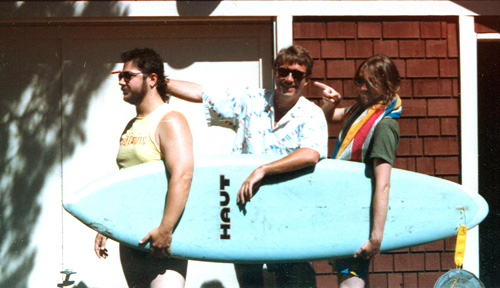
Thinking about Mundane SF set me to reminiscing about the “Freestyle SF” barely-a-movement that I talked about with Marc Laidlaw and Richard Kadrey back in 1987, right after I moved to California. Michael Blumlein and Pat Murphy were co-conspirators in 1987, and by now I’d certainly include John Shirley, Terry Bisson, Paul Di Filippo and Bruce Sterling as Freestylists as well (what these last authors have in common is that I have co-authored stories with them, ergo they must be Freestylists!)
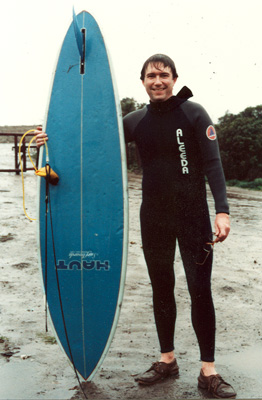
I got a surfboard in December, 1986 — which I never really learned to use — and Marc and I were brimming over with surfin’ analogies to writing. We were heavily studying surf magazines.
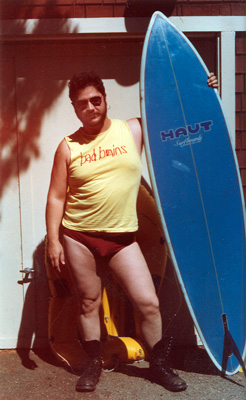
Here’s one quote we dug: “Life on the edge measures seekers, performers, and adventurists.” Marc started writing me letters in the surf-magazine style. “There it is, Rude Dude. The Freestyle antifesto. No need to break down the metaphors — an adventurist knows what the Ocean really is. No need to feature matte-black mirrorshades or other emblems of our freestyle culture — hey, dude, we know who we are. No need to either glorify or castrate technology. Nature is the Ultimate. We’re skimming the cell-sea, cresting the waves that leap out over the black abyss …” Marc was reacting against cyberpunk a bit there. The eternal dialectic.
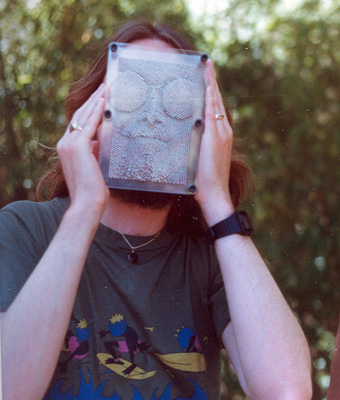
Marc started publishing a neat zine called Freestyle, but it only went through three issues, and then, I dunno, he moved and it fell apart.
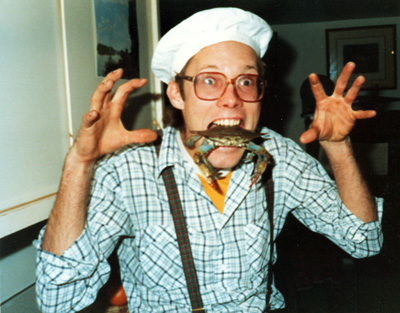
(This last picture I found in the same part of the photo albums I was scanning today, it’s Dennis Poague, a.k.a Sta Hi Mooney, hero of the Wares.) I kind of feel like refurbishing the Freestyle concept. As its meaning was always pretty vague, maybe I can just make up a meaning as I see fit. How about this for a start: the primary mission of SF need not be futurology. Certainly it’s interesting and valuable to write “thought experiment” style stories to tease out the possible aspects of imagined worlds. But even here, the writer isn’t constrained to make the SF assumptions be at all technologically likely as seen from the possibly blinkered viewpoint of the early 21st Century. You can do a thought experiment starting with any assumptions you like. Back to the main thread, I think a lot of SF is the sensual pleasure that lies in what I call Power Chords, about playing good patterns — and about Transrealism, that is, using the SF tropes as ways to delve deeper into the psychic nature of the day-to-day world. My main desideratum is, as ever, that it be Gnarly.









April 25th, 2006 at 8:08 pm
Those are great photos, Rudy. Could you tell us something about Dennis Poague? I love Sta Hi Mooney.
April 26th, 2006 at 12:23 pm
Dennis info can be found in my essay “Haunted by Phil Dick” which is in my collection Seek!. I also put this particular essay on line a few months back, to find the link jump back to my February 6, 2006, blog entry. I won’t put a link here, because links can’t go into comments. Here’s an edited excerpt:
The character Sta-Hi, also known as Stahn, also known as Stanley Hilary Mooney, is transreally inspired by a real person: Dennis Poague, occupation freelance mechanic, legal status Blank (like the “Blank Reg” character in Max Headroom), long-term resident of San Jose, now residing in Belo Horizonte, Brazil.
I met Dennis in the mid-seventies when I was teaching college in up-state New York, a state college in a small town called Geneseo, described as “Bernco” in White Light. Dennis’s brother Lee was an English professor who lived across the street from us. One day Dennis showed up from California on his way to Europe, acting totally outrageous.
Dennis and I got along very well together, each of us happy to meet such a madman. And for the rest of the time in Geneseo, every half year or so Dennis would orbit through our town and we’d see him.
When my wife and I moved from Geneseo to Heidelberg for a two-year grant I had, Dennis stayed in touch, sending, among other goodies, tapes of the Dr. Demento show, and, best of all, tapes of the people who rode in his cab. He was driving a cab in San Jose — just an unknown Latino-sounding California city to me then. The cab tapes were amazing, like of drunk hookers, or of giggly teenage girls, with Dennis’s manic, insinuating voice going on and on, “You girls wanna stop and do a bowl? I’m Sta-Hi, live or die, just keep me high, chaos and confusion reign supreme!”
From Heidelberg we moved to Lynchburg, which I always write about as “Killeville,” and then I found out where San Jose really is (it’s at the southern end of Silicon Valley, which stretches up the Bay peninsula through Palo Alto to San Francisco), and we ended up moving here, and for a few years I saw Dennis quite a lot.
November 16th, 2006 at 6:33 pm
qsvunt wnumkfcb ubmckydj qgbanltpr yzetv gcwu dfovjgk